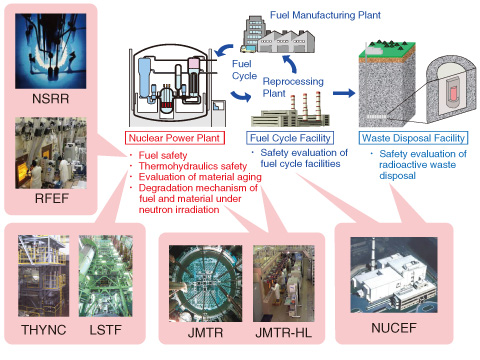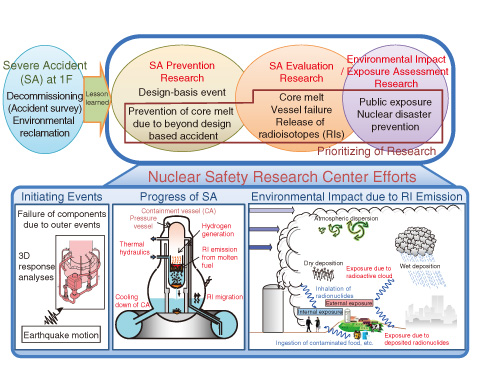
Fig.6-1 Nuclear safety research areas and related JAEA facilities

Fig.6-2 Future directions of nuclear safety research
The possibility of serious accidents in nuclear installations and their consequences have been studied at the Nuclear Safety Research Center (NSRC) to ensure the safe use of current nuclear facilities. A massive and severe accident occurred at the Tokyo Electric Power Company, Incorporated Fukushima Daiichi Nuclear Power Station (1F) as a result of the Great East Japan Earthquake and tsunami. The NSRC has been collaborating with the Japanese government to institute appropriate emergency response procedures based on research findings and developments. Most specialists at the NSRC regret that they were unable to prevent the accident.
Continuous efforts should be made to avoid serious damage while we use nuclear energy. A proper understanding of the situation and continuous improvement of developed technologies are important for making the best and safest use of the technologies. The International Atomic Energy Agency, which investigated the accident at 1F, pointed out the importance of “continuous improvement.” To contribute to “continuous improvement aimed at the highest level of safety,” we are committed to safety research using the various facilities shown in Fig.6-1. Radionuclides are handled and accident conditions are safely simulated at these special facilities.
In this chapter, the results of recent safety research on the following topics are presented: prediction of the amount of fission product (FP) gas stored in high-burnup fuel (Topic 6-1), a structural integrity evaluation method for piping (Topic 6-2), a method of evaluating isotope elements in the spent fuel (Topic 6-3), and thermal aging embrittlement of cast stainless steel (Topic 6-4).
To reduce the risk to nuclear facilities and enhance the preparedness for emergency conditions that are postulated to lead to a severe accident, as shown in Fig.6-2, we are planning to conduct nuclear safety research with a priority on the prevention and evaluation of severe accidents as well as on disaster prevention measures such as environmental impact assessment.
The following topics related to the accident at 1F by the NSRC are described in Chapter 1:
(1) Assessment of Doses to the Inhabitants Living in Fukushima Prefecture (Chapter 1, Topic 1-10)
(2) Dose Estimate for Workers and Public with Incineration and Disposal of Dehydrated Sludge (Chapter 1, Topic 1-11)
(3) Review of Five Investigation Reports on Fukushima Accident (Chapter 1, Topic 1-18)